Editor's note:
The Afghanistan war ended just as it began. The country has once again come to a crossroads as the U.S. pulled its traumatized soldiers out of its longest war in history, with the Taliban riding back to power they had been stripped of 20 years ago. Afghanistan, a mountainous territory nestled in the heartland of Asia, has long been a battlefield of global powers. But it has never been conquered, and hence had the sobriquet of the "Graveyard of Empires."
In this series "Through the lens: Afghanistan 2001-2021," we dive into the scars the war has left on the country, and the fear, wrath and resilience of the Afghan people. Our seventh article focuses on the country's widening wealth gap. You can find the whole series here.
On February 29, 2020, the United States under the Trump administration and the Taliban signed the Doha agreement, signifying the war that lasted two decades was coming to an end. The conditions included the withdrawal of all NATO forces from Afghanistan within 14 months. In return, the Taliban pledged to prevent al-Qaeda from operating in areas they controlled. As part of the deal, the U.S. withdrew about a third of its army by July 2020, reducing its forces in Afghanistan from 13,000 to 8,600.
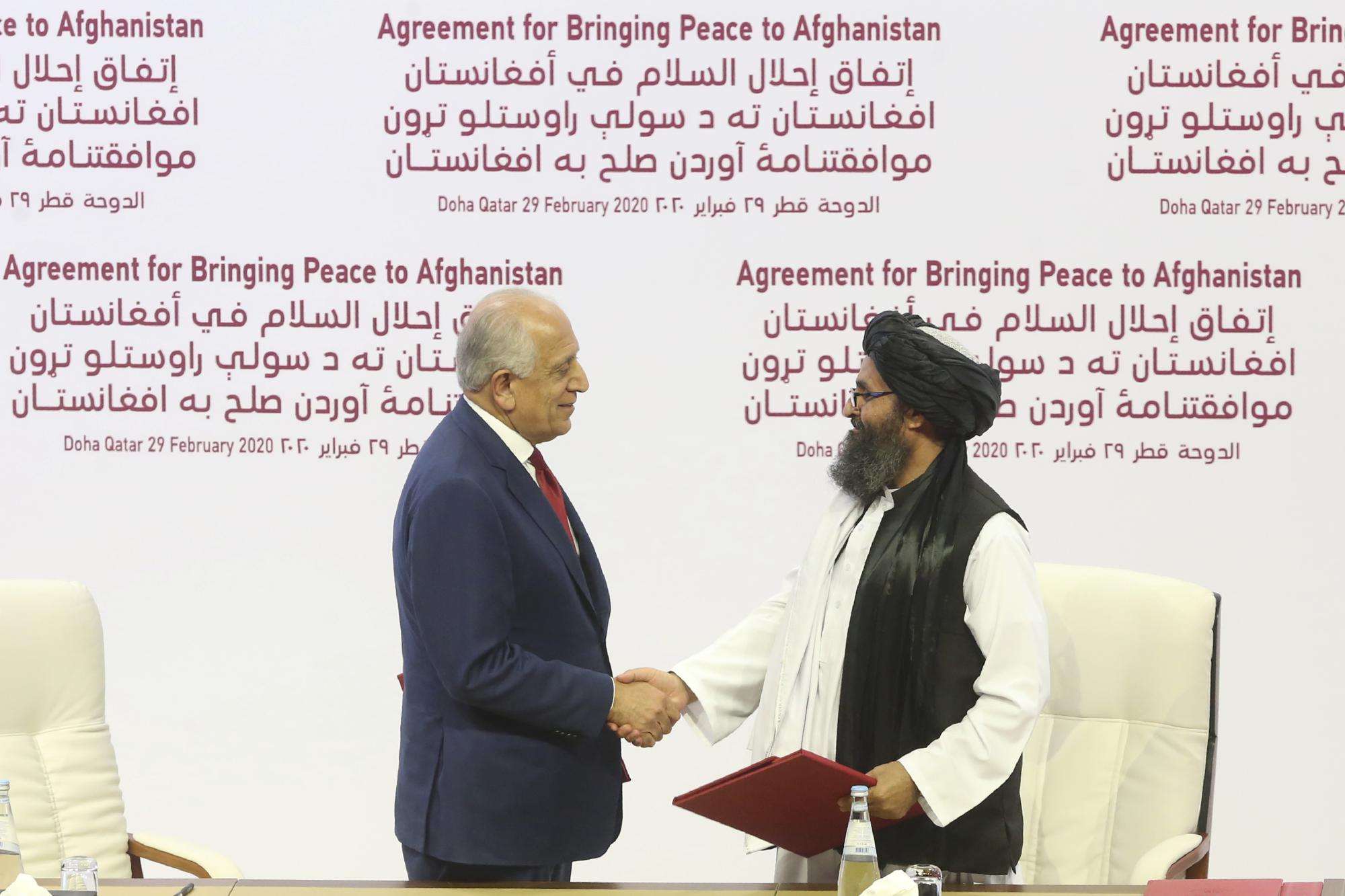
U.S. peace envoy Zalmay Khalilzad (L), and Taliban group's top political leader Mullah Abdul Ghani Baradar shake hands after signing a peace agreement between the two dies in Doha, Qatar, February 29, 2020. /AP
U.S. peace envoy Zalmay Khalilzad (L), and Taliban group's top political leader Mullah Abdul Ghani Baradar shake hands after signing a peace agreement between the two dies in Doha, Qatar, February 29, 2020. /AP
When Joe Biden took office in 2021, the U.S. still had around 2,500 personnel in Afghanistan. On April 14, Biden announced the troops withdrawal would be completed by September 11, marking the 20th anniversary of the terrorist attacks that sparked the invasion. But on July 8, the deadline was changed to August 31. Biden reaffirmed his determination to exit the war which he thought should have ended with Osama Bin Laden's death 10 years ago.
Things were roughly in line with the U.S. anticipation until August. At the beginning of August, only 650 U.S. troops remained in Afghanistan. The acceleration of the Taliban's takeover, however, caught the U.S. and its NATO allies off guard. On August 6, the Taliban launched their assault on the capitals of Afghanistan's 34 provinces. Their forces swept through the country effortlessly, meeting minimal resistance from the Afghan army. On August 12, Biden ordered the deployment of 3,000 more U.S. troops to aid the evacuation, and two days later the total number of U.S. troops in Kabul was increased to 5,000. Provincial capitals were captured day by day by the Taliban, at a speed far exceeding NATO members' expectations. Soon, all but Bazarak and the nation's capital, Kabul, were taken.
In early August, a U.S. intelligence assessment estimated that Kabul could be overrun in 90 days. On August 15, Kabul fell.
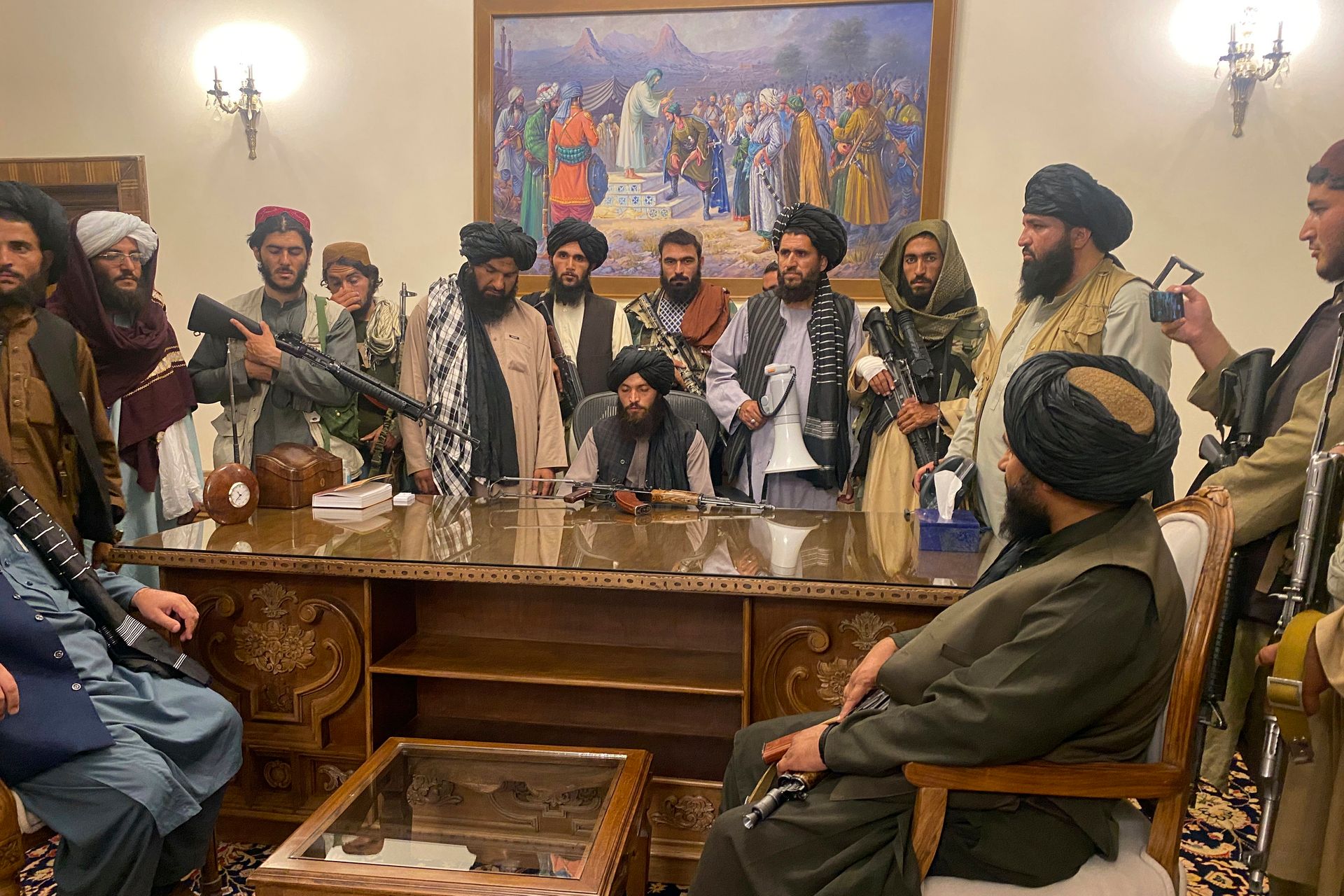
Taliban fighters take control of the Afghan presidential palace after then Afghan President Ashraf Ghani fled the country, in Kabul, Afghanistan, August 15, 2021. /AP
Taliban fighters take control of the Afghan presidential palace after then Afghan President Ashraf Ghani fled the country, in Kabul, Afghanistan, August 15, 2021. /AP
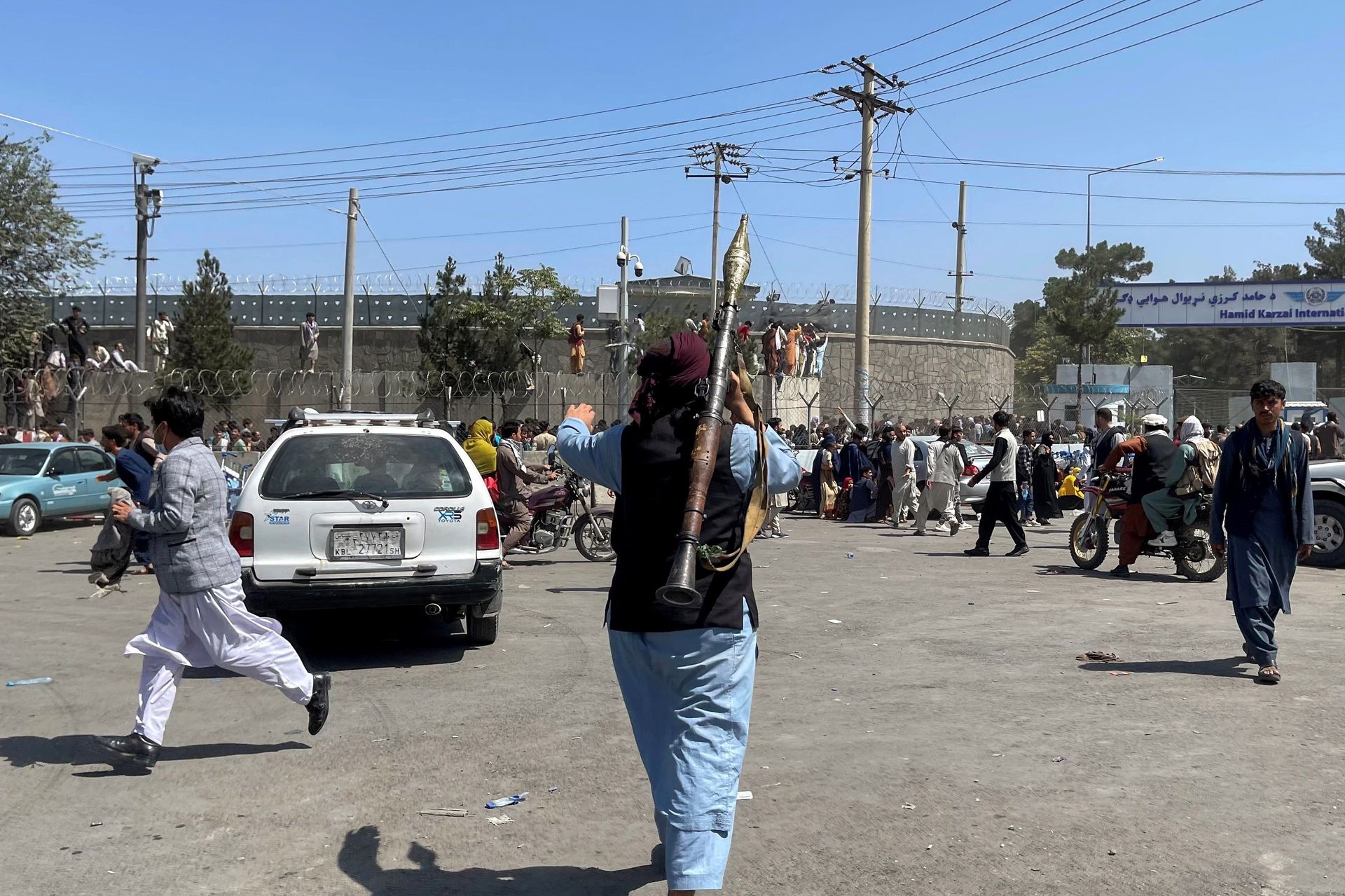
A member of Taliban forces inspects the area outside Hamid Karzai International Airport in Kabul, Afghanistan, August 16, 2021. /Reuters
A member of Taliban forces inspects the area outside Hamid Karzai International Airport in Kabul, Afghanistan, August 16, 2021. /Reuters
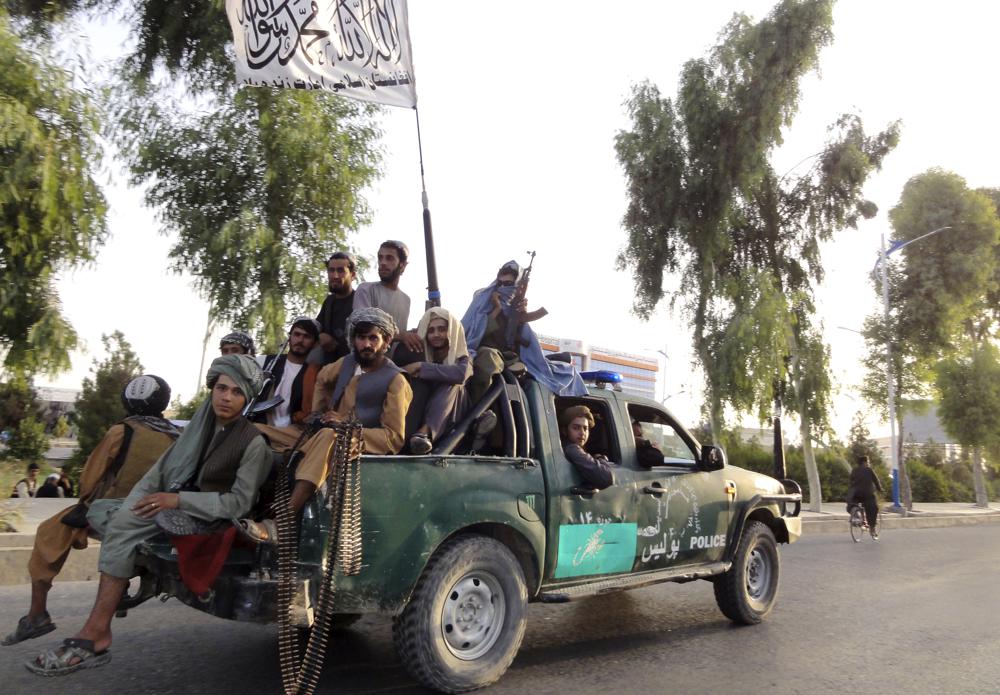
Taliban fighters patrol inside the city of Kandahar, southwest Afghanistan, August 15, 2021. /AP
Taliban fighters patrol inside the city of Kandahar, southwest Afghanistan, August 15, 2021. /AP
The fall of Kabul marked the total collapse of the Afghan government and the Taliban's complete takeover. All border crossings were blocked, and Kabul's Hamid Karzai International Airport, which was still under NATO control, was the only port out of Afghanistan.
Chaos soon began. Fearing the return of Taliban rule, thousands of civilians rushed to the airport in panic. Hundreds filled up the tarmac, many climbed over the boundaries to block the airstrip. In a viral video, Afghan people ran alongside a U.S. air force transport plane in a desperate attempt to catch any flight out of the country. Some even managed to climb onto the aircraft. One film captured two people falling off the plane mid-air to death.
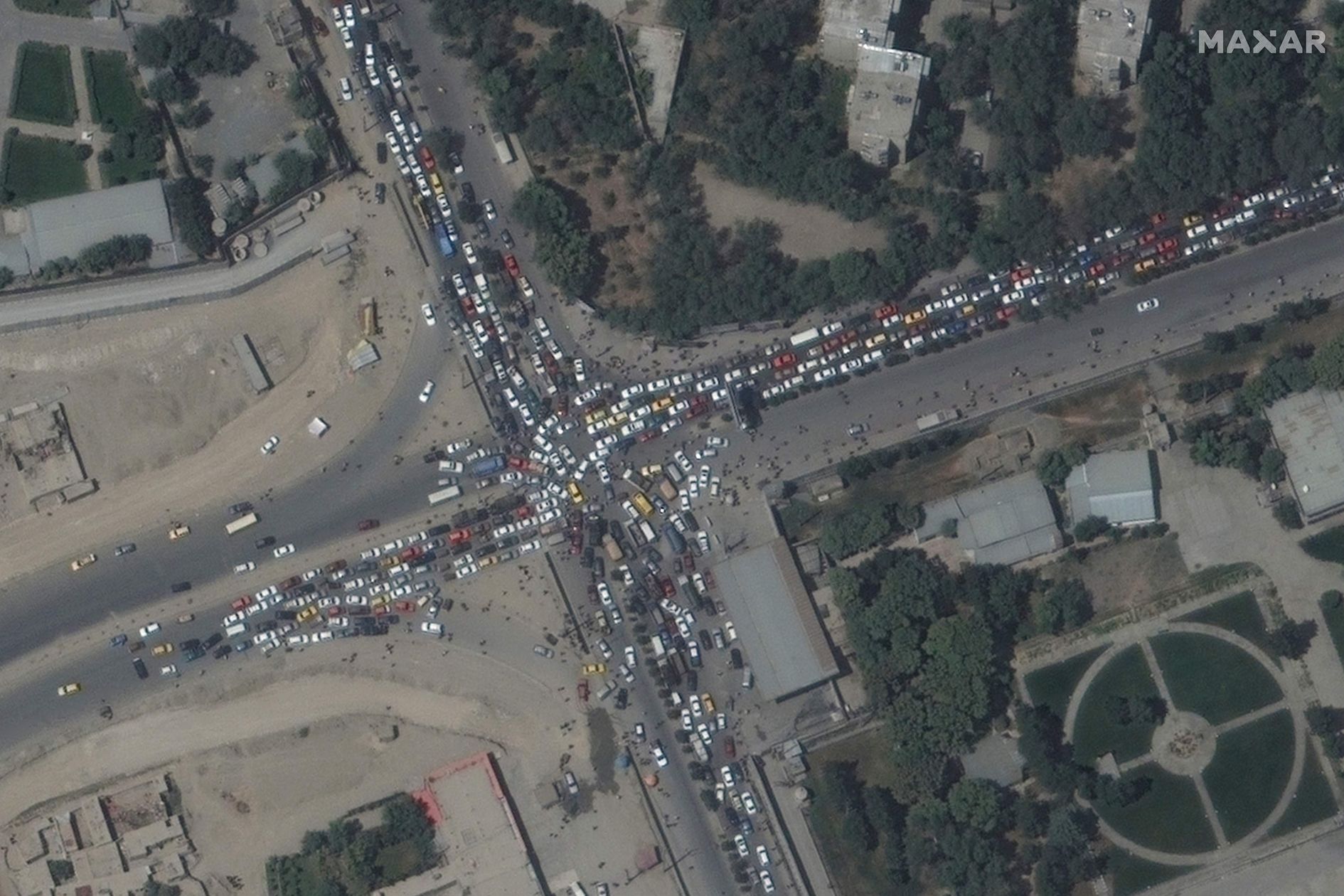
People tried to reach Kabul's international airport by road and, below, on foot. /AFP
People tried to reach Kabul's international airport by road and, below, on foot. /AFP
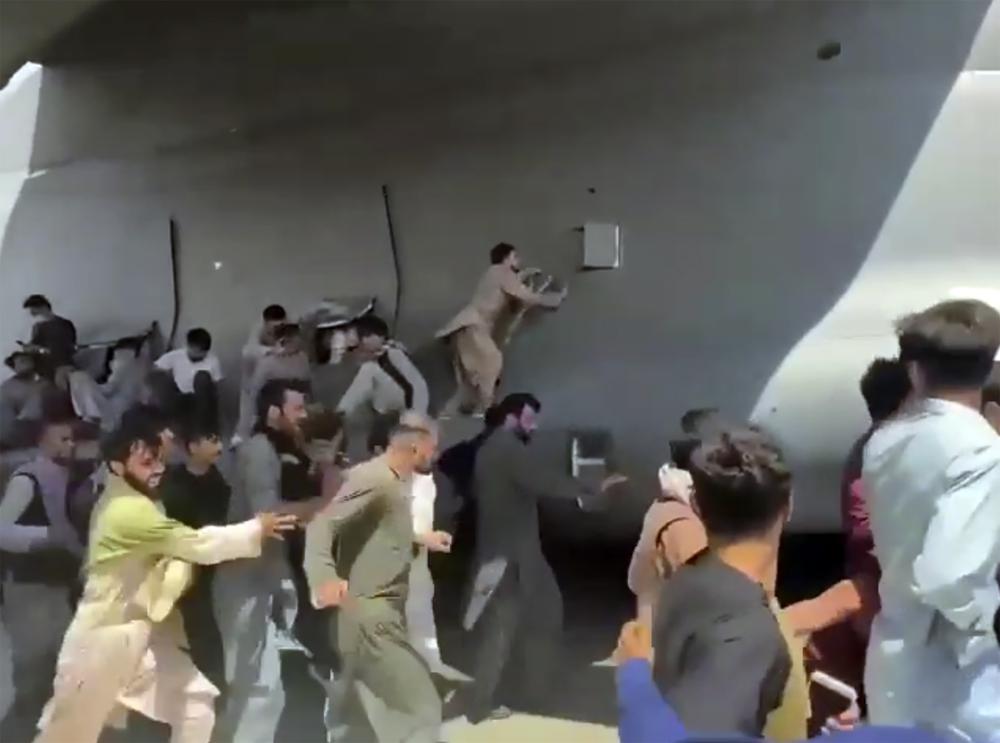
Hundreds of people run alongside a U.S. Air Force C-17 transport plane, some climbing on the plane, as it moves down a runway of the international airport in Kabul, Afghanistan, August 16, 2021. /AP
Hundreds of people run alongside a U.S. Air Force C-17 transport plane, some climbing on the plane, as it moves down a runway of the international airport in Kabul, Afghanistan, August 16, 2021. /AP
Due to this unexpected turn of events, the initially planned withdrawal of troops evolved into an airlift of NATO diplomats, Western nationals and eligible Afghan refugees. With Kabul's capture on August 15, 1,000 U.S. troops were deployed to the city. The next day, another 1,000 joined, bringing the total number to 7,000.
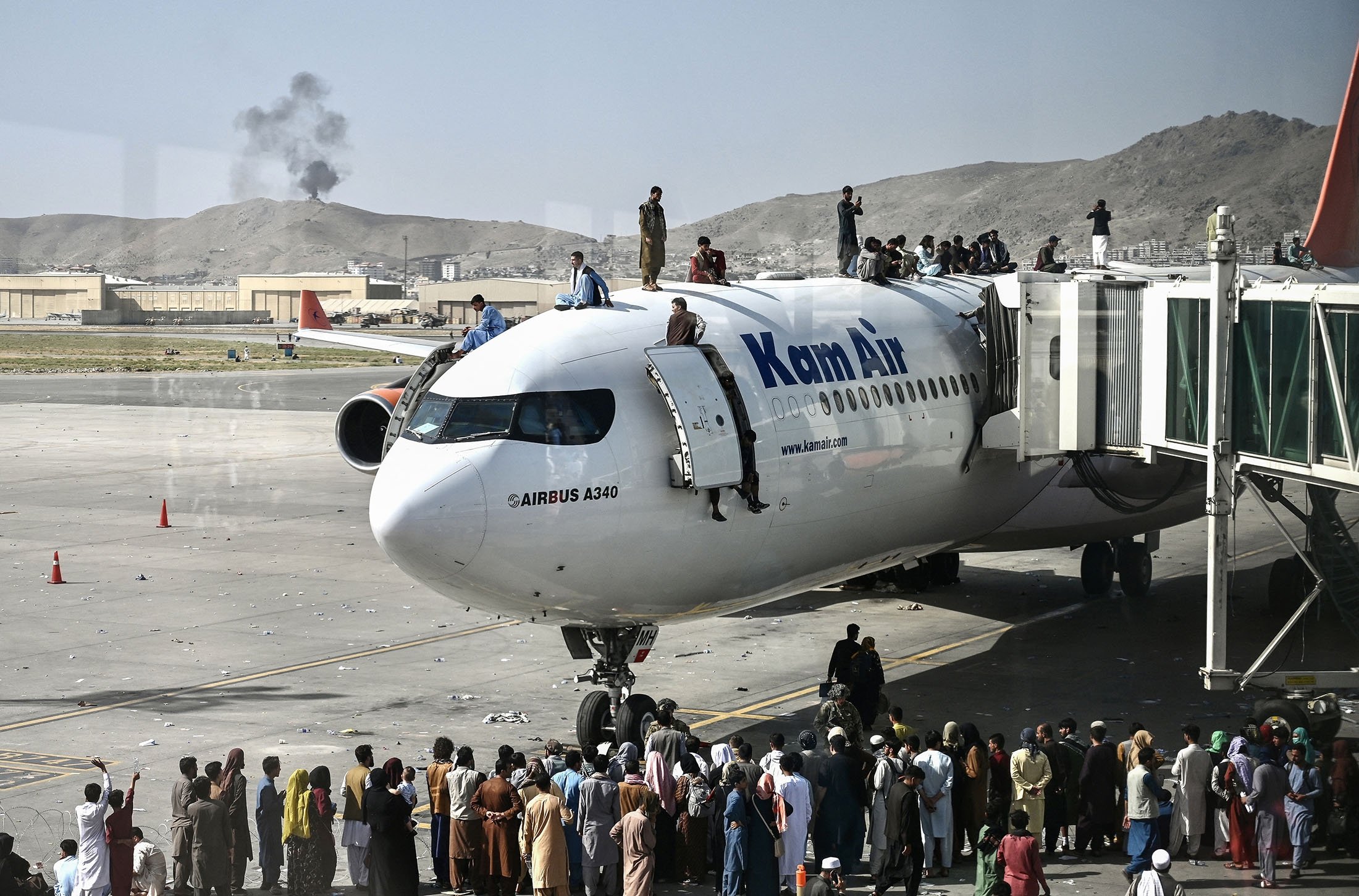
Afghan people climb atop a plane as they wait at Kabul's international airport. /AFP
Afghan people climb atop a plane as they wait at Kabul's international airport. /AFP
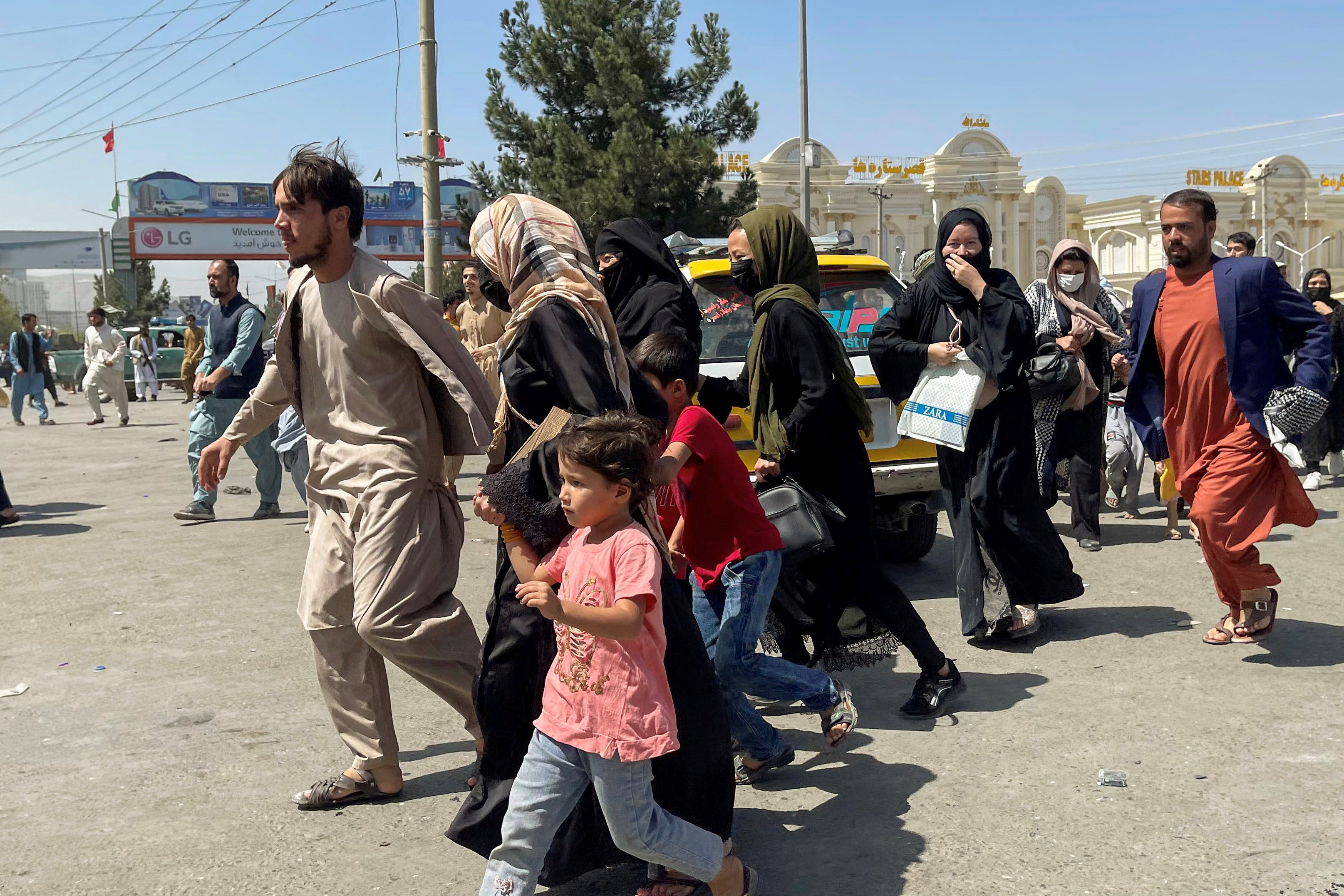
People are seen trying to get into Hamid Karzai International Airport in Kabul, Afghanistan, August 16, 2021. /Reuters
People are seen trying to get into Hamid Karzai International Airport in Kabul, Afghanistan, August 16, 2021. /Reuters
In the following days, thousands of people flew out daily. Refugees, each with handfuls of documents, surrounded the gates of the airport in punishing summer heat, pleading to American soldiers to be allowed in. The soldiers guarding the checkpoint were not immigration officials, and it was out of their knowledge whose documents met the qualifications and whose did not. Hence they went with an informal rule of only accepting U.S. passports and green cards. Some who had valid qualifications were still ignored. Seven were reportedly trampled and killed by the stampeding crowd, including a 2-year-old child.
At parts of the boundaries where the walls were shorter, razor-wire barriers could not stand against people's desperation as many tried to climb over them. On August 26, a suicide bomb attack occurred outside the gate of the airport. The explosion killed at least 182 people, among them 169 Afghan civilians and 13 U.S. military personnel.
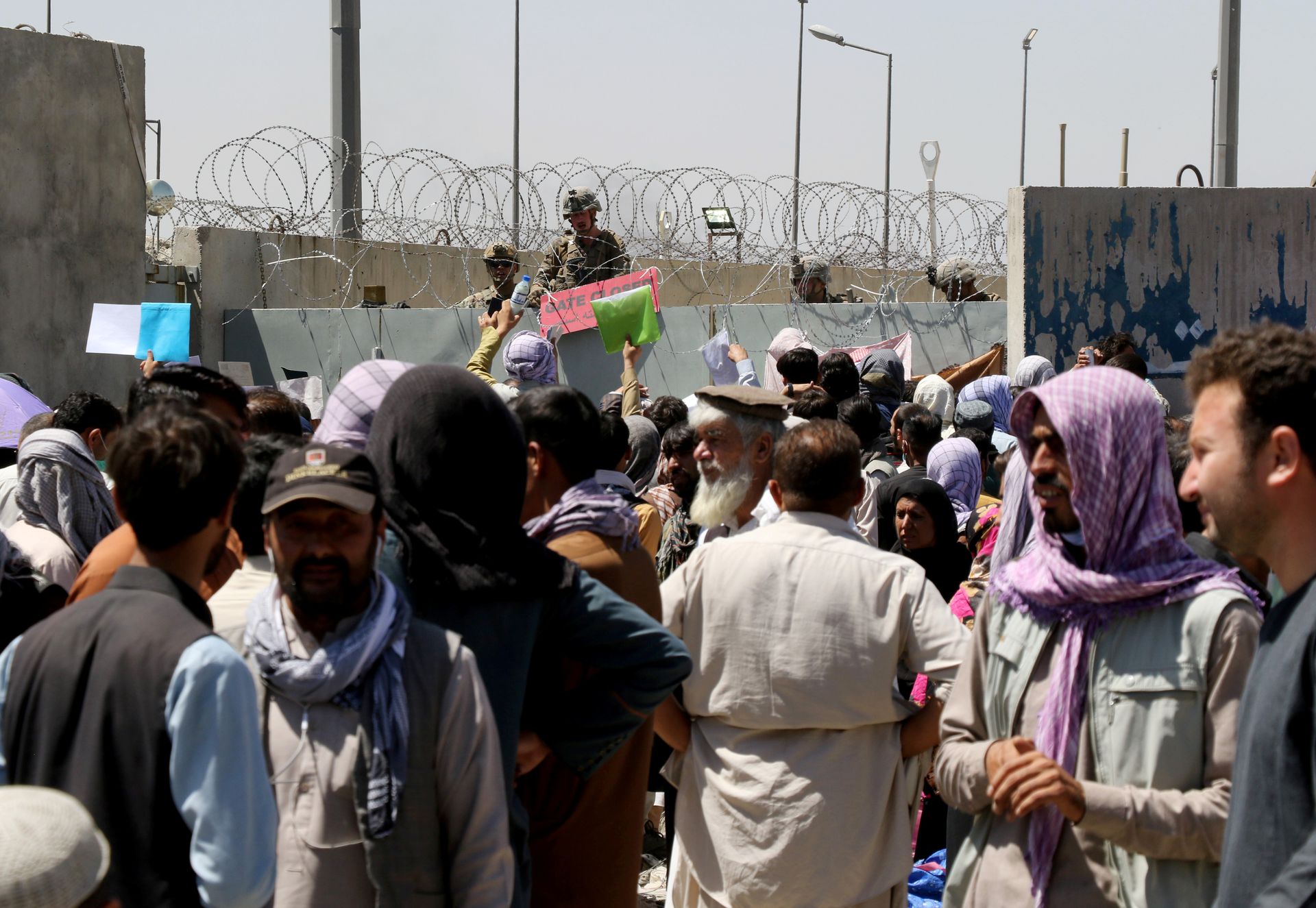
Crowds of people show their documents to U.S. troops outside the airport in Kabul, Afghanistan, August 26, 2021. /Reuters
Crowds of people show their documents to U.S. troops outside the airport in Kabul, Afghanistan, August 26, 2021. /Reuters
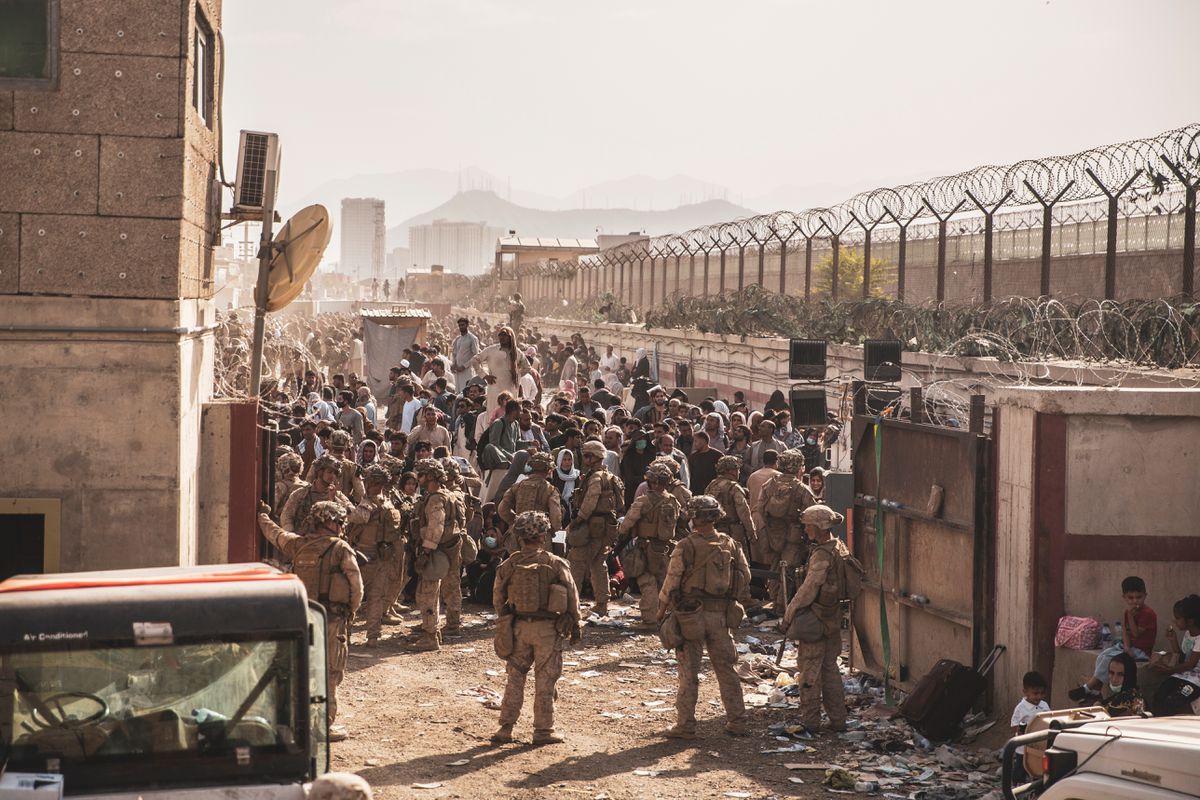
U.S. Marines provide assistance at an Evacuation Control Checkpoint during an evacuation at Hamid Karzai International Airport, Afghanistan, August 22, 2021. /Reuters
U.S. Marines provide assistance at an Evacuation Control Checkpoint during an evacuation at Hamid Karzai International Airport, Afghanistan, August 22, 2021. /Reuters
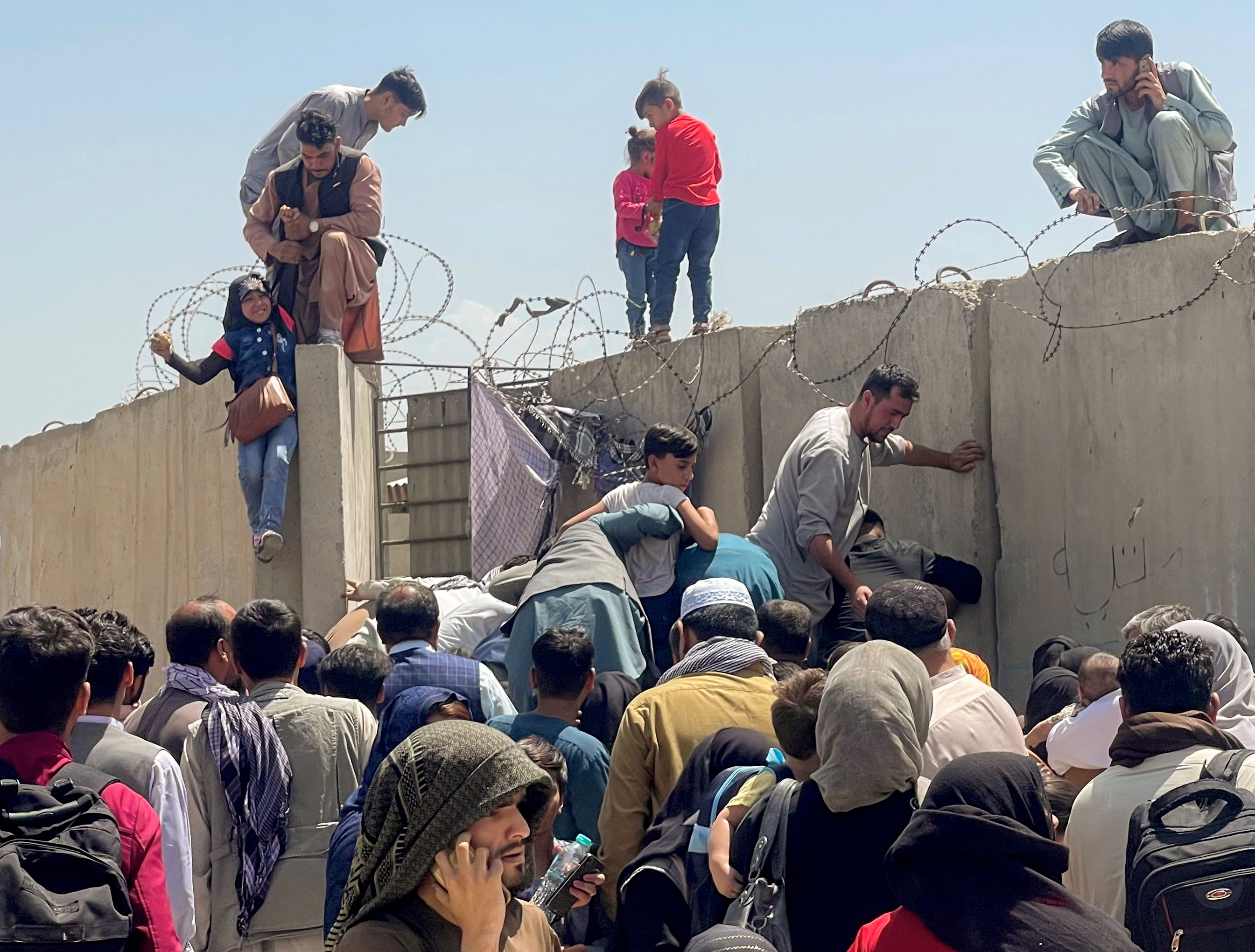
A man pulls a girl to get inside Hamid Karzai International Airport in Kabul, Afghanistan, August 16, 2021. /Reuters
A man pulls a girl to get inside Hamid Karzai International Airport in Kabul, Afghanistan, August 16, 2021. /Reuters
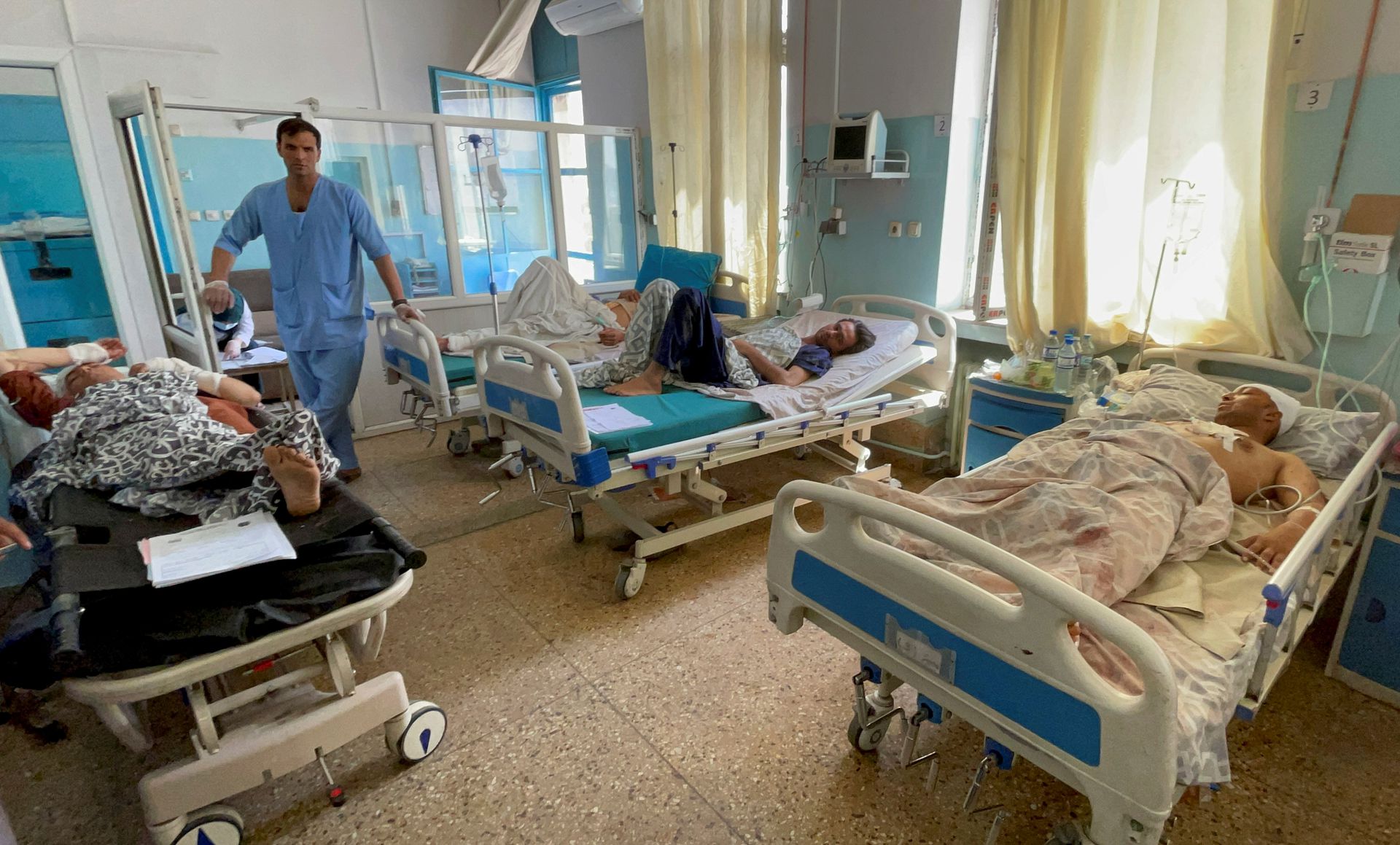
Wounded Afghan men receive treatment at a hospital after the explosions a day before outside the airport in Kabul, Afghanistan, August 27, 2021. /Reuters
Wounded Afghan men receive treatment at a hospital after the explosions a day before outside the airport in Kabul, Afghanistan, August 27, 2021. /Reuters
On the night of August 30, the final evacuation flight departed from Kabul. More than 123,000 civilians had been evacuated by the U.S. and its allies since August 14. But thousands of Afghans who want to leave were still left behind at Kabul's airport. Their hope of escape diminished, and Afghanistan's murky future awaits.
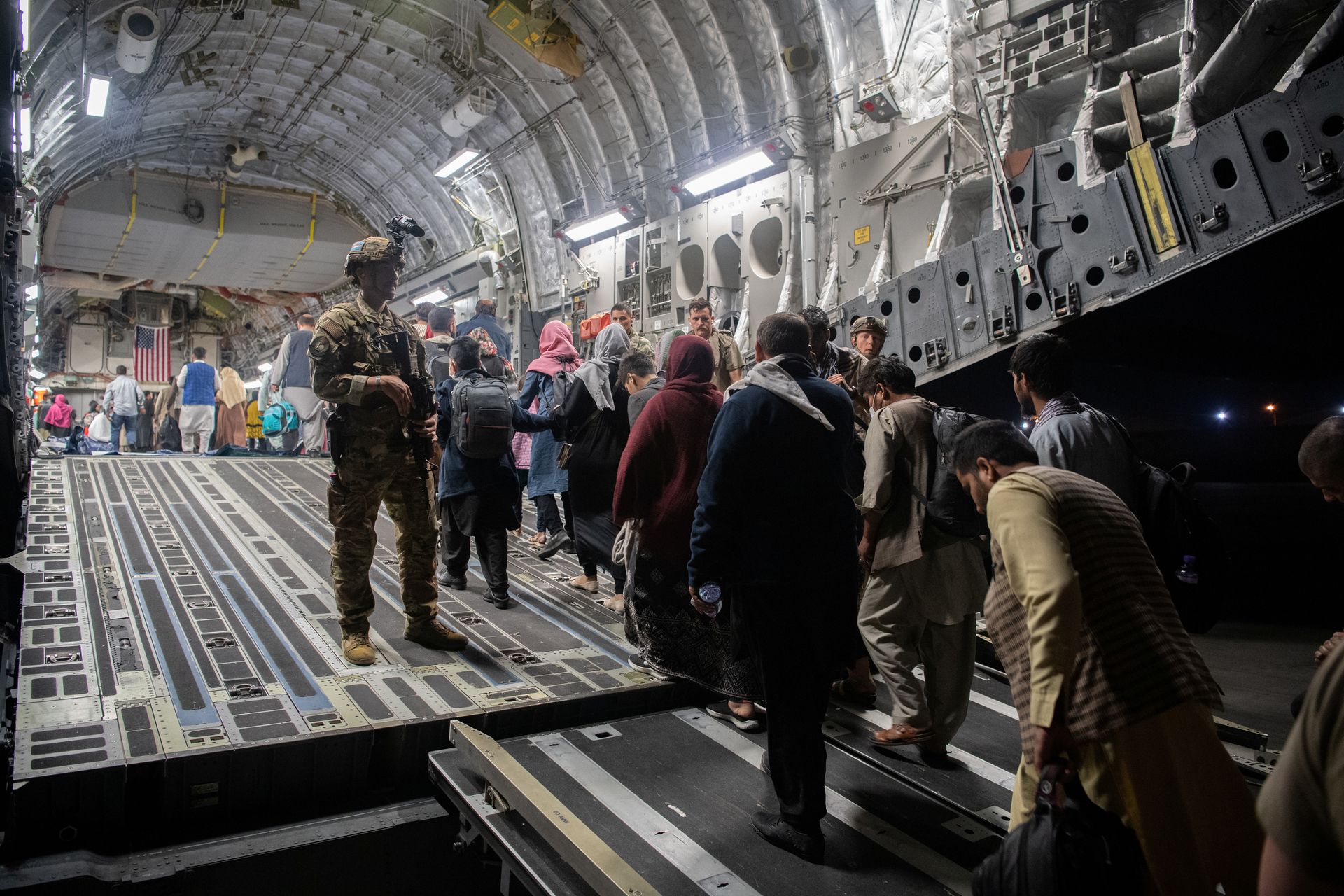
Afghans board a U.S. Air Force C-17 Globemaster III transport plane during an evacuation at Hamid Karzai International Airport in Kabul, Afghanistan, August 22, 2021. /Reuters
Afghans board a U.S. Air Force C-17 Globemaster III transport plane during an evacuation at Hamid Karzai International Airport in Kabul, Afghanistan, August 22, 2021. /Reuters
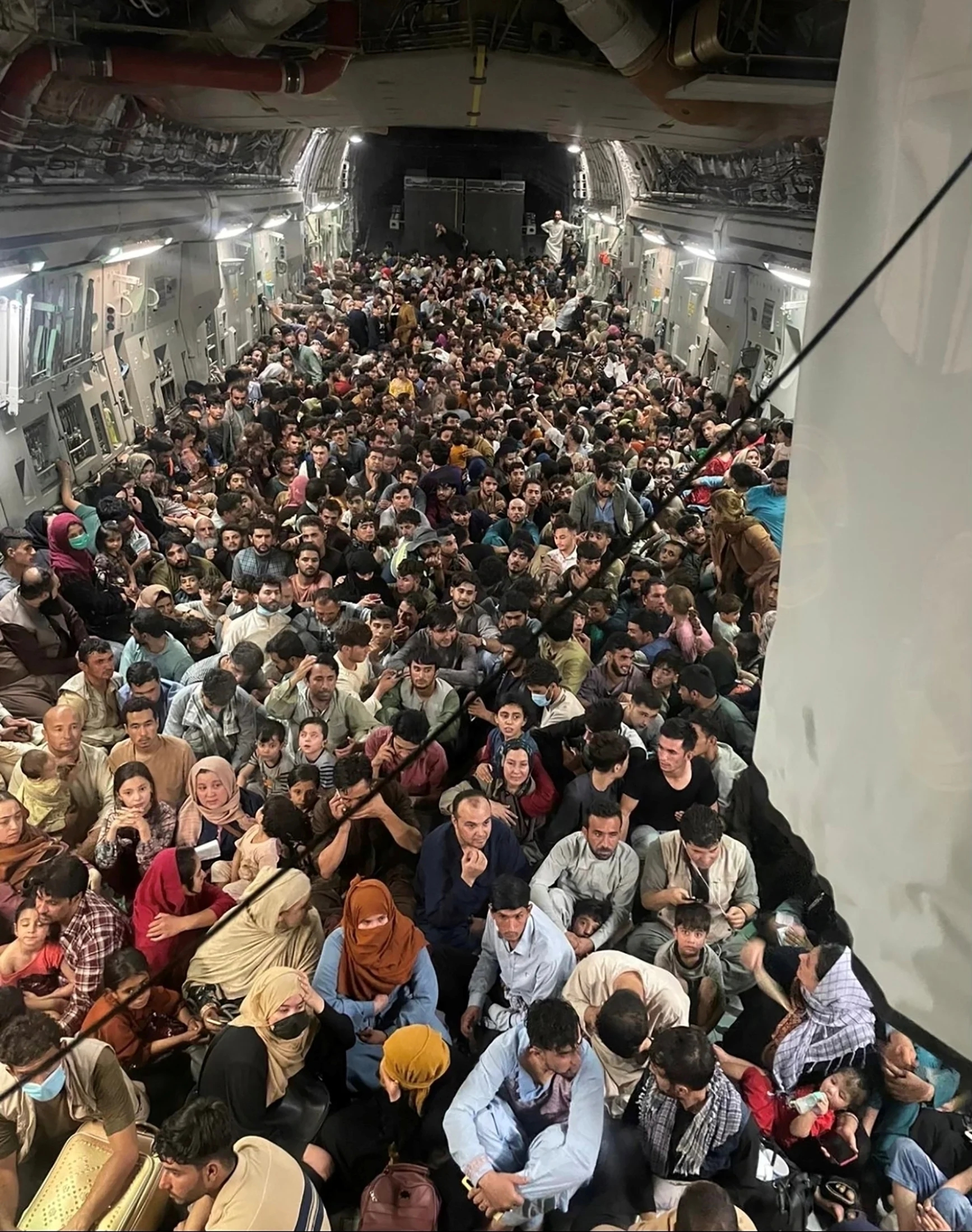
Evacuees crowd the interior of a U.S. Air Force C-17 Globemaster III transport aircraft, which carries some 640 Afghans to Qatar from Kabul, Afghanistan, August 15, 2021. /Reuters
Evacuees crowd the interior of a U.S. Air Force C-17 Globemaster III transport aircraft, which carries some 640 Afghans to Qatar from Kabul, Afghanistan, August 15, 2021. /Reuters
Cover image designer: Liu Shaozhen

